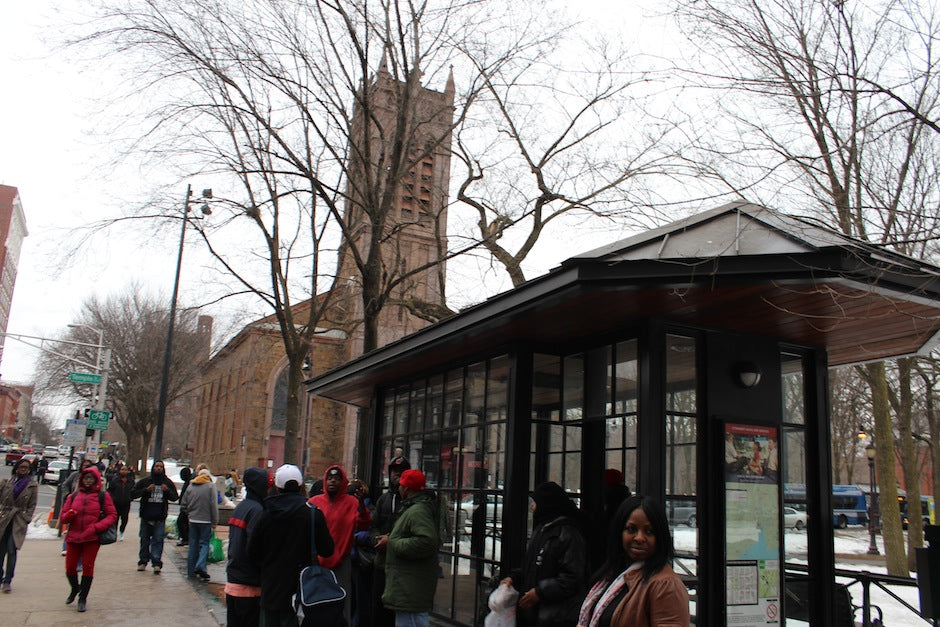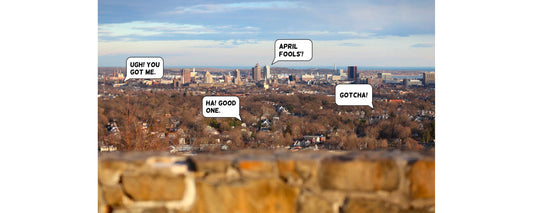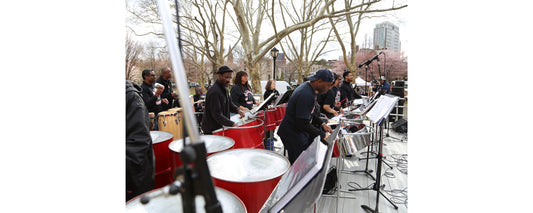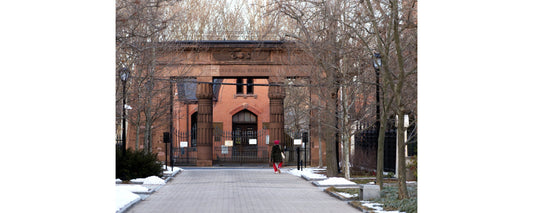First you’re in New Haven, turning onto Derby Avenue. Then, briefly, you’re in West Haven, still on Derby. Next comes Orange, where the Derby Turnpike becomes New Haven Avenue. Then you’re in Derby.
The F6 bus route is a trip that traverses several cultures in a matter of miles: city culture, road culture and suburban shopping plaza culture.
’Twas not always thus. Derby had a strong identity as a factory town. Corsets and hoop skirts were manufactured there. Comic book superheroes—Blue Beetle, E-Man and others—flew out of the Charlton Publications printing and distribution empire from the mid-1940s into the late ’90s.
sponsored by
New Haven had been a lot of different things, but in the first half of the 20th century the city asserted itself particularly as an ivy league university town.
What connects these disparate cities now? A road that bears both their names. And the lone bus that lopes along it like a stagecoach of yore.
For a buck-thirty, the F6 will bring you past a lot of shops and office buildings and fast food emporiums. You’ll also see one of the landmarks of city transit, the Yale Bowl. Any montage of photos of the golden age of trolley travel in the city has an obligatory shot of dozens of students hanging off the sides of a streetcar headed to the Bowl for a Bulldogs football game.
There’s virtually no foot traffic in the area these days, but looking out the bus windows you can see the world of pizza shops and package stores that grew up around the neighborhood. You can also glimpse the New Haven Open tennis tournament venue which was added to the sports mecca of the Yale Bowl and Walter Camp Field. Other outdoorsy delights you can glimpse from the comfy confines of the F6 are the environmentally focused Barnard School and the lush slopes of Evergreen Cemetery.
Ride farther and you’ll pass the cheery balloon-shaped sculptures outside the Nissan dealership in West Haven, and the Daiko Japanese restaurant.
As the route winds further down Derby Avenue, the landscape shifts to secluded residential areas. You’ll notice barns that were long ago converted to car garages. Reaching right back to the road’s rural roots, there are whole stretches of quiet, desolate woodland.
The scene on the bus is quite a bit livelier. A recent ride saw some animated conversations, some head-bobbing to iPods, even a discreet diaper change. Folks are helpful, polite, social.
Some are going to shop at Walmart Plaza, which also features a lot of shops much smaller than Walmart; the plaza is still listed on the bus schedules under its old name, the Orange Derby Shopping Center. (Perhaps orange Derby hats are no longer in fashion, hence the change.) A few hundred yards further down New Haven Avenue there’s a large Lowe’s Home Improvement store (ever brought a bathroom sink home on a bus?). Some are switching transportation options at the Derby Railroad station, which is actually just mid-route in the long F6 ride, which leaves New Haven Green 16 times a day between 6 a.m. and 7:30 p.m. Beyond Derby, the F6 brings you to parts of Shelton, Ansonia and Seymour. Twice a day, on the 6 a.m. and 3:13 p.m. runs, you can request that the driver take you out as far as Seymour’s Silvermine Industrial Park.
On a recent snowy mid-day Monday, the F6 (and its counterpart in the other direction, the trusty old F4) was the only bus of any kind seen tooling up the turnpike around those Walmart and Lowe’s plazas (an area which is also the home of Heav’nly Donuts, the Valley Diner restaurant, a classic IGA supermarket and dozens of small businesses and professional offices). To cross the road to get to the bus stop, a foot of icy snow had to be chipped away from where it covered the “Walk” button on the lightpost. This was over a week after the snow had fallen. Other stops on the route are clearly more regularly used, but there’s no mistaking that cars rule the road, which only makes those few buses and their mission more important.
Bus culture in New Haven is a glorious thing. It’s centered at the ornate metal shelters right in front of New Haven Green. It extends beyond our capacity to walk, to places where we might need to work, or shop, or visit an orthodontist. It brings New Haveners together, and takes them further. And it connects our close-knitted past of tight neighborhoods and city boundaries to those cities (including Derby, the state’s smallest municipality) that grew up around us.
Not bad for $1.30.
Written and photographed by Christopher Arnott.








